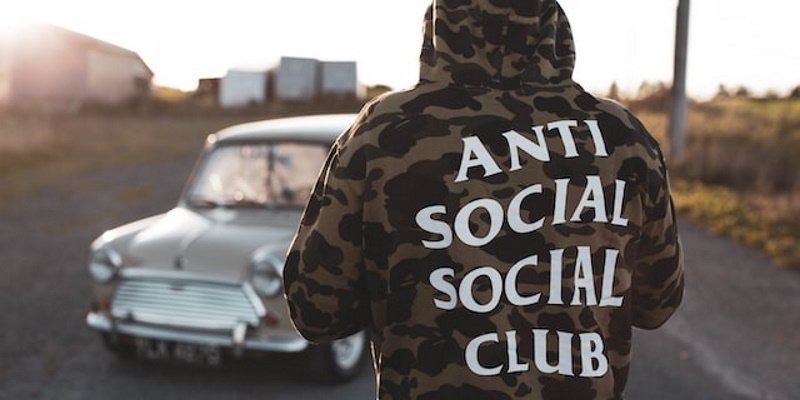
For the most part we’re all conformists, as we’ll do what everyone else is doing. We’ll just follow the crowd and try to fit in, all while not willing to admit it. It’s estimated just 1 out of 10 people, will engage in a behavior that’s considered to be contrary to the norm, or what’s socially unacceptable.
What we see is the “law of the norm” operating in groups, in organizations, during meetings, and in day-to-day public life. In each of these situations, there seems to be a certain standard.
Churches for instance, there’s a certain moral code, which determines the standard behavior that’s acceptable by the congregation.
In organizations, there’s all the bylaws, the years of tradition that’s been established as standard operating procedure, the company’s “Mission Statement.”
And because all we want is to fit into these groups, or maintain our memberships status, what we do is conform.
Monkey See Monkey Do
What we’ll do is find out what others are doing, to validate our own actions and not stand out. This is the method on how we decide what constitutes as correct acceptable behavior.
We see a certain pattern as being more correct, once we see others doing it.
The more the general public will do something, the more correct it appears or becomes.
For politicians, the media, advertising and savvy marketers, this has become standard practice.
What marketers for instance will do, is artificially inflate the sales for their product, by manually increasing their numbers.
What then results without fail because of the artificially “high” sales, is they see a spike in revenue, because what artificially boosting their sales does is indicates popularity.
Consumers will always become more interested in purchasing something, once this type of mass hysteria hype is created.
Whatever action it may be, such as how fast you drive in traffic, or how to properly eat soup in a trendy restaurant, what the validation of what others are doing, guides our actions.
Just Follow The Crowd
What we feel is validation, once we see others do what we ourselves want to do. We learn early in life, we’re more likely to make fewer mistakes or be liked more, once we follow the crowd.
What’s known is there are two types of norms: explicit and implicit.
What explicit norm refers to, are publicly spoken or written direction. For instance, employee manuals, road signs, or rules to a game or sport, are types of explicit norms.
Implicit norms aren’t usually stated as openly. You usually don’t need to be told, or prompted to say “hello” to someone, or smile once you see a friend, as you do so instinctively.
Or, you know better than to put your fist through a wall at work when talking to your boss or a client, even though that individual may of asked you to.
Knowing What’s Acceptable
If we have no idea what the norm is, what we’ll do is look around and find out.
“The Law of Social Validation” is a way of saving time and energy, to figure out what’s correct or not.
What we do is use the behavior of others to guide our own actions, to validate what our actions should or shouldn’t be.
We don’t always need to just look at the positives or the negatives of every situation. What this automatic response does is keeps us aligned.
We compare what we do or how we react, to the standards of what everyone else is doing around us.
Once we find discrepancy between what we observe and what we happen to do, what we tend is to make changes in the direction of what the social norm is.
To Follow Social Validation
What social validation does is compels us to change our behavior, attitude, and our actions, even when what we observe doesn’t match what our true feelings, morals, or thoughts are.
What we go against is our better judgment because we want to be accepted, to be part of the crowd or in agreement with others.
Once we’re part of the crowd, we then no longer feel individually responsible for our actions.
We allow ourselves to shout, cry, sing, or strike without the temperament that’s imposed by our personal accountability.
Just Wanting To Fit In
We seek out social norms to know what we should be feeling or doing. For the most part, this isn’t a conscious process.
What we do is subconsciously accept how we behave is what’s determined by our surroundings, along with the actions of others.
This includes raising our voice to speak up in meetings, to tip in a restaurant, or knowing how to behave in school.
Once we become part of the group and conform and not be an outsider, our once divergent emotions and feelings converges.
Follow Social Cues
There are times we find ourselves in unknown foreign situations, where we feel awkward or unsure of how we should be acting.
This is when we’ll look for social cues which will dictate our behavior, so we don’t stand out like a weirdo.
This could be at a party, the first day of college, or even a family reunion of people you don’t know.
Once the social information we’re seeking is ambiguous and we have no idea how to respond, we will continue to seek out clues.
What would you do if you were sitting in a seminar when somebody shouted, “Fire!”
Do you think you’d stand up in the seated crowd and make at run for it? If everyone else does, then you would.
If everyone remained seated as it’s a false alarm, then you would remain seated as well.
We’re just creatures of social conformity, where we want to fit in like sheep.
